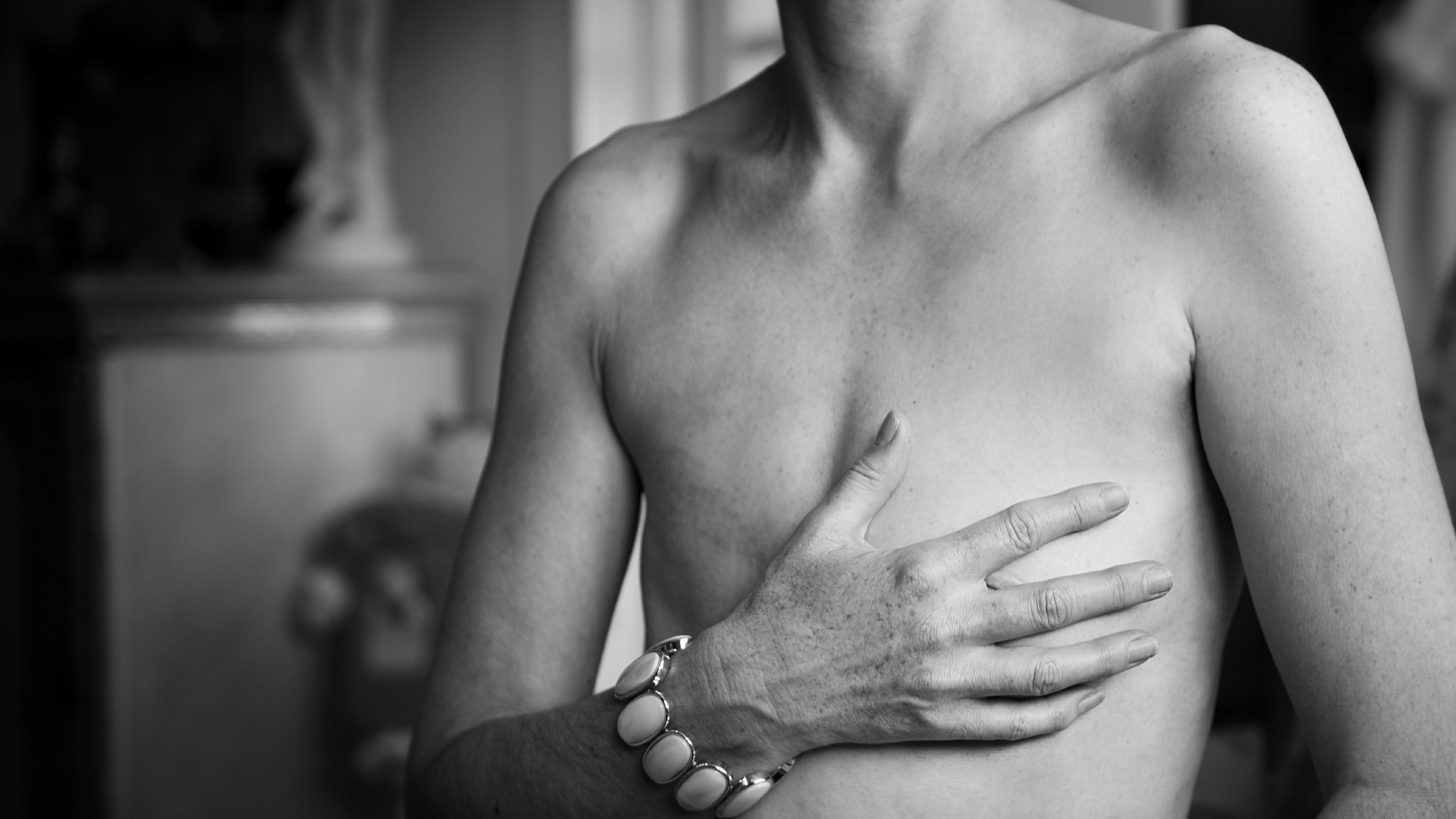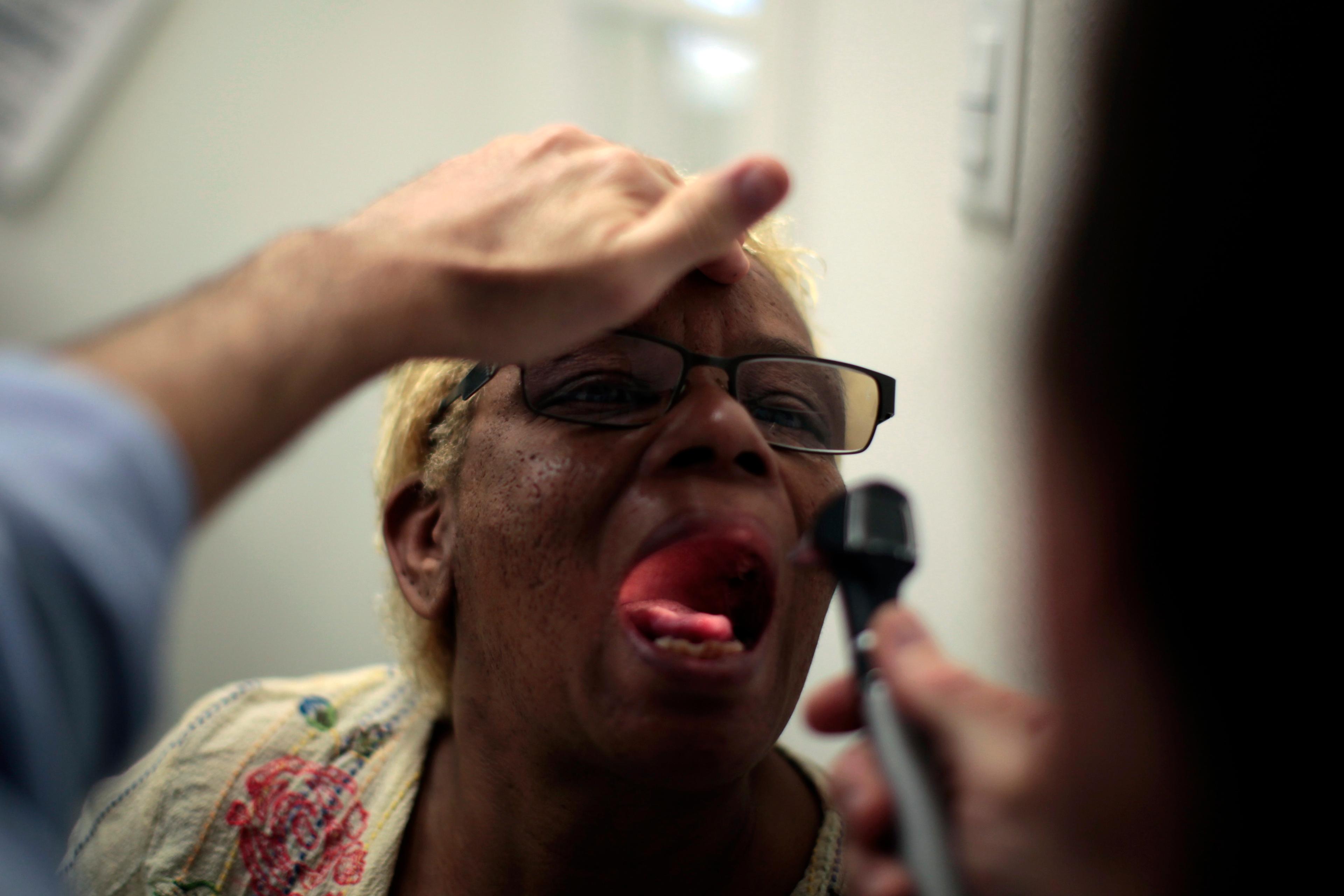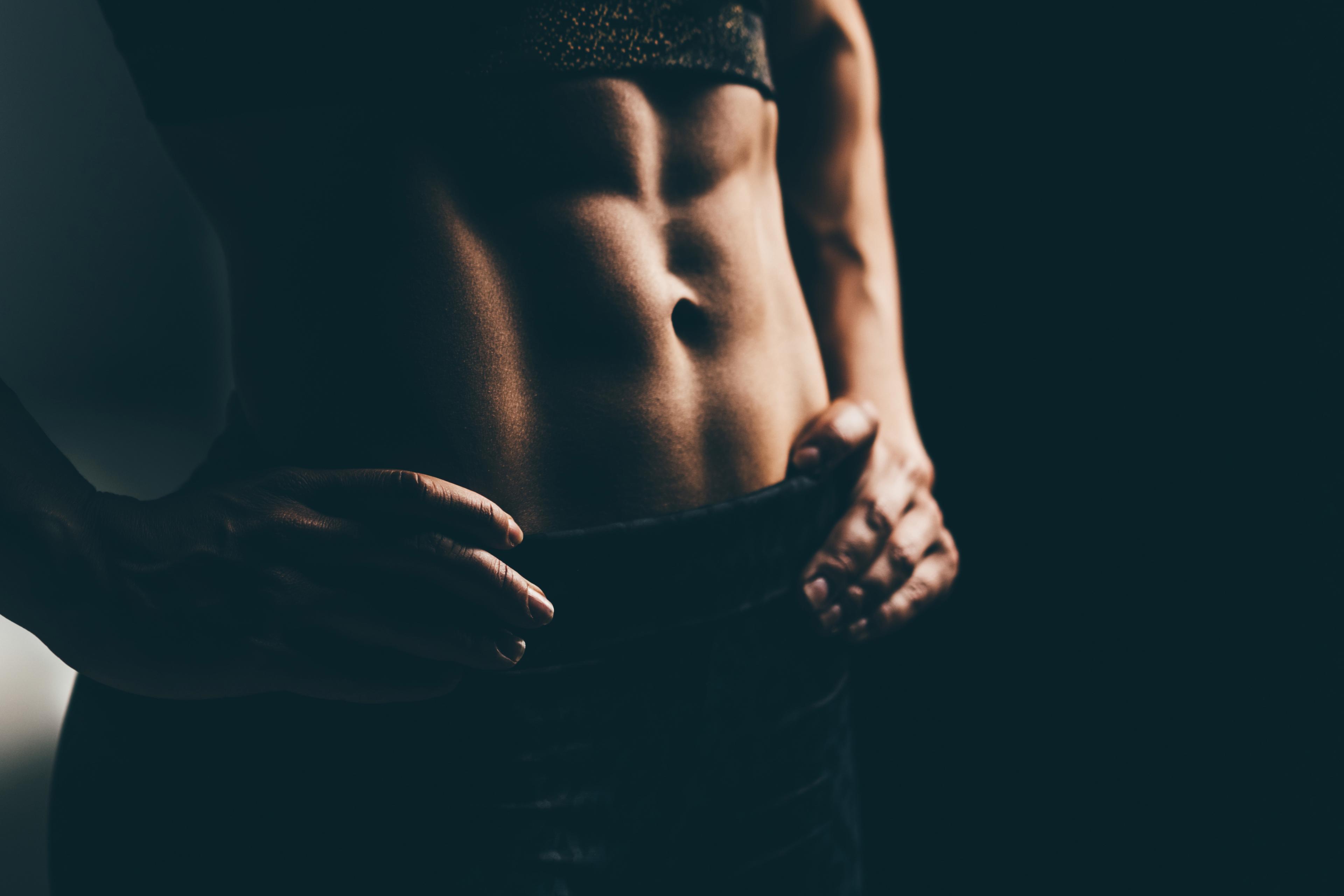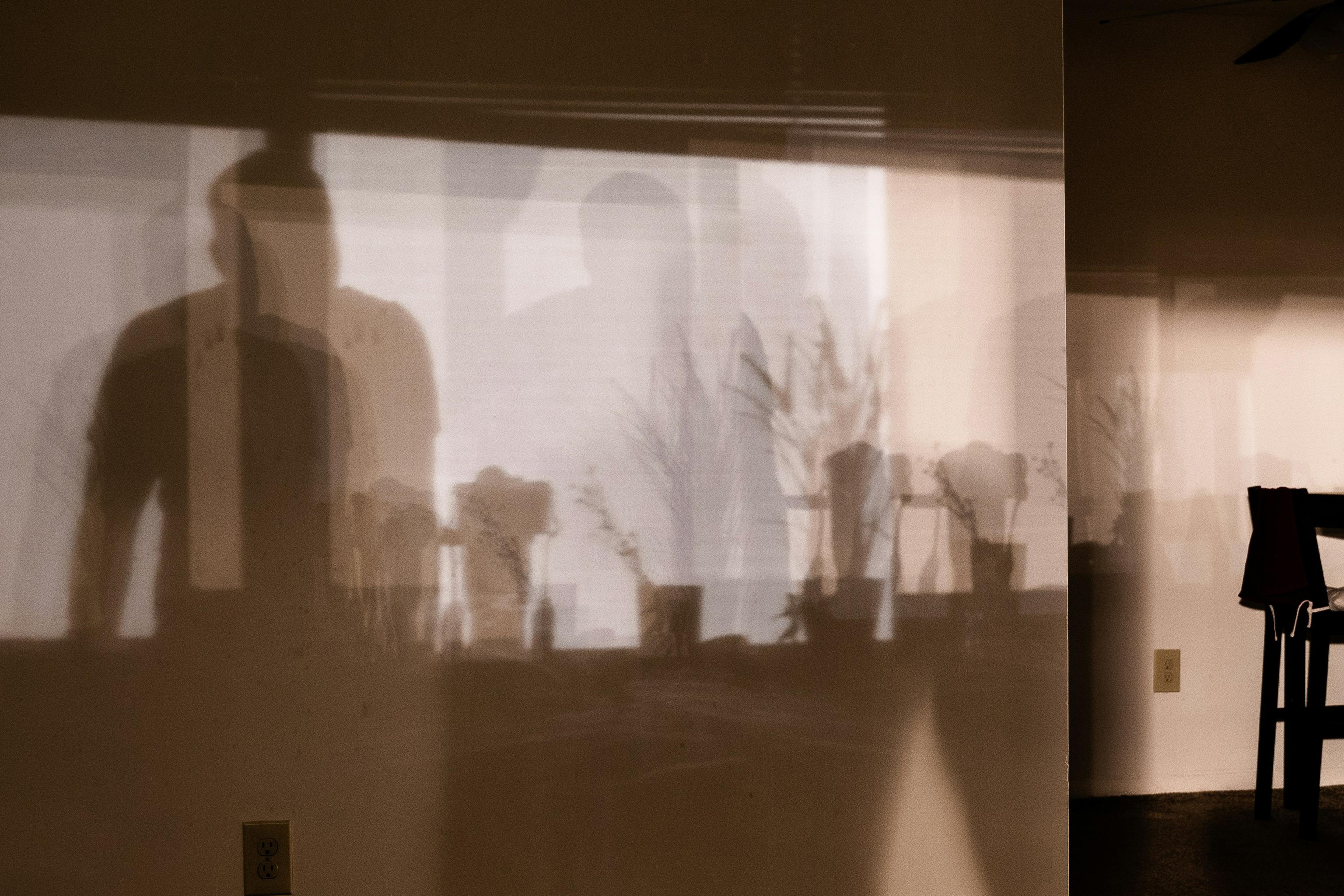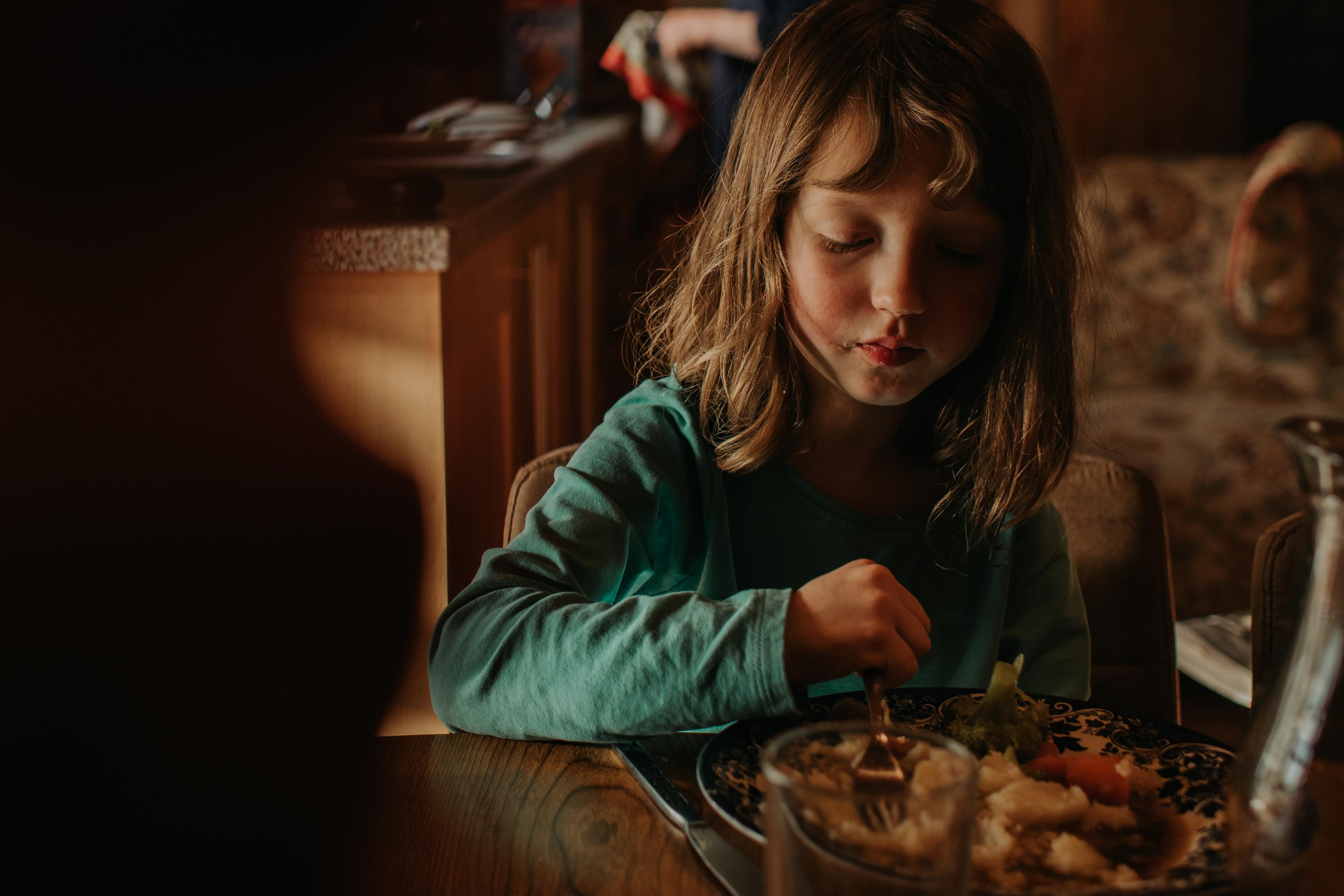I am a woman with only one breast. My right breast was removed in July 2014 as a result of invasive breast cancer. Not that anyone ever notices. In the daytime, I wear a prosthesis, a false boob, and my friends tell me my real one is perkier. At least it was; I’m older now so the left one is starting to droop. As a young woman, my breasts were considered magnificent by some. Frequently an obstacle to normal conversation with men, tongue-tied and staring at my chest. Truth be told, I didn’t really know what to do with my breasts. They were big and bouncy and entered the room before I did.
Now at night in bed, snug in pyjamas, prosthesis in a drawer, my left breast lolls free, falling onto the hollow where the other used to be. The concave area where my right breast was removed is not completely flat, however; there is a loose piece of skin, a small hummock of tissue that remains a tribute to my surgeon, who would not accept that I didn’t want reconstruction. In case I changed my mind, he left just enough tissue to be stretched over a bag of silicone gel or saline – something to be inserted into my body rather than just resting on top. Something invasive, just like my cancer.
I am among the one in eight women who get breast cancer. In the United Kingdom, around 43 per cent of us have a mastectomy (the figure in the United States is around 35 per cent); in both the UK and the US, around half of that group don’t have reconstruction. You don’t notice us, but we are all around you. There are many reasons why reconstruction may not be viable, but I made a choice. The first time I met my surgeon and told him that I didn’t want reconstruction, he didn’t hear me. He just kept on talking about different types of reconstruction, different implants, fake nipples and nipple tattoos, cosmetic surgery on my remaining breast if the new one didn’t match. Even if I’d wanted reconstruction, it would have been impossible to process all the information thrown at me. Newly diagnosed with cancer, it felt like any bad decision might be a fatal mistake.
It wasn’t just him, it was the whole team. At each new appointment, the medics acted like a demented sales team desperate to upsell, and deaf to my rejections. They were convinced I’d be bereft without some form of breast. The medics believed my body was their territory, just like the men who once ogled.
Waking up the morning after my operation felt dreamlike. I’m dazzled by the bright light of a glorious summer day bouncing across stark white hospital walls, and the clear blue sky beyond the picture windows. Post-anaesthetic, I am floating. Flowers are everywhere – mastectomy patients are love-bombed with bouquets. That moment of confusion, of not knowing where I am. Then remembering. They have amputated my right breast.
I try to sit up. Surgery means I won’t be able to lift my arms to take anything off over my head. Before a mastectomy, you are told what to wear: post-operation button-through pyjamas and an unwired bra that opens at the front.
The nurse appears; she also doesn’t believe I’ve made the right choice. She even asked my partner if he could live with me having only one breast. His answer was clear: ‘As long as she’s not dead I don’t care.’ Now she’s here to help me into my new bra. To support me through the big reveal as I negotiate my flat chest for the first time. She has a ‘softie’ in her hand, a squishy ball of fabric and foam which will be my first prosthesis while my wound is healing. The equivalent of a training bra in terms of first steps into a new body.
Standing at the end of the bed, she smiles gently. Then the questions start again. ‘Are you OK?’ ‘Yes.’ She reframes it. ‘I mean, are you OK with your decision?’ ‘Yes.’ She tells me: ‘Well, you might not be when you have to look at it. That’s when it will become real but I’m here for support.’ It doesn’t feel like support, it feels like judgment.
I stick my head down my top to peer at my new chest. I see a wound fixed with bits of tape, slightly swollen and bruised, otherwise flat. My breast definitely absent. I am transfixed by the loss but elated that the tumours are gone. The monstrous event I have spent weeks psyching myself up for has occurred. I pray that I am now free of cancer. ‘I’m fine, it looks fine,’ I call out to the nurse. She looks unnerved. She tells me she’ll be back in a minute to take my drain out and put my bra on, then I can go home.
The lady opposite asks how I get to leave so quickly. I explain that, since I’ve opted not to have reconstruction, I need only an overnight stay. Her face drops. She hadn’t realised she could say no. Though in her 60s, she’d been talked into an immediate reconstruction with silicone implant: ‘and I don’t even have a nipple,’ she says.
In different ways, both of us were victims of the all-pervasive idea that breast reconstruction is an essential part of the treatment pathway. In fact, it’s a relatively recent phenomenon. Until the 1970s, the primary treatment for breast cancer was a radical mastectomy, often performed as part of a biopsy: the procedure would take place under full anaesthetic and, if a lump was found to be cancerous, the breast would be removed. A woman would go for investigative surgery and potentially wake up with a cancer diagnosis and no breast.
This shift towards reconstruction is partly down to breast cancer activists who championed breast-preserving surgery, and later, access to reconstruction. Activists such as the actress Shirley Temple Black, diagnosed in 1972. Temple refused the biopsy/mastectomy joint surgery. The first major public figure in the US to write about her experience in a woman’s magazine, she emphasised her right to decide what was done to her body, saying: ‘The doctor can make the incision: I’ll make the decision.’
The shift also coincides with the rise of cosmetic surgery in the 1980s. In her book The Beauty Myth (1990), Naomi Wolf describes how the number of people undergoing cosmetic surgery in the US tripled between 1986-88, with the industry expanding by manipulating ideas of health and sickness, and subtly reclassifying beauty as health. The term ‘onco-plastic breast surgery’ was also introduced in the 1980s denoting the development of breast-conserving and reconstruction techniques. By 2009, breast augmentation was the most popular cosmetic surgery in the US. Almost a decade after immediate reconstruction became the standard of care in the UK in 2002, a highly influential report by the NHS found that women who had reconstruction reported a better quality of life post-cancer than those who stayed flat. However, this shouldn’t impede a woman’s right to refuse reconstruction.
It’s likely that the societal expectation that surgeons can and should magically create perfect breasts post-mastectomy is as much a product of the beauty industry as it is a medical intervention. However, breast augmentation and breast reconstruction are two very different procedures. The first is much simpler, since no tissue has been removed. Recent research suggests that one in three women undergoing breast reconstruction will experience complications, and in 5 per cent of cases reconstruction fails.
During my treatment, I found support online, from other women being challenged about their choice to ‘go flat’ – the term now widely used within the breast cancer community. Groups include the US-based Flat and Fabulous and the then-embryonic UK-based Flat Friends, of which I became one of the first members. These active communities support women choosing to live flat, and campaign to address the bias in the system.
It turns out that the issues I faced are so common there is now a formal term for it. ‘Flat denial’ – defined as when surgeons either didn’t initially offer the choice to go flat, didn’t support the patient’s decision, or intentionally left extra skin in case the patient changed her mind. Recent research suggests that activist communities have made going flat more visible, but that their prochoice rationale isn’t reflected in surgical practice: 22 per cent of women who responded to a US survey experienced ‘flat denial’.
Activists feel they are not being heard. In 2014, The Guardian published a public letter by the writer Stella Duffy addressed to ‘My Breast Reconstruction Surgeon’. Dissatisfied with the outcome of her reconstruction surgery and presented with the option to reshape her remaining breast, she says: ‘You are insulting the part of me that has, brilliantly, not had cancer.’ Feeling judged, she fights back: ‘I don’t care what you can see. I care what I can feel.’ Clearly, women need information and support before making such complex, value-laden decisions about surgical options: but, most importantly, we need to be listened to.
As I write this, a song by Salt-n-Pepa runs through my mind, except the lyrics have changed from ‘Let’s talk about sex’ to ‘Let’s talk about breasts.’ As women, we are not expected to talk about our breasts, only to show them off. Even though breast cancer has stopped being a hidden disease, society still believes one of the worst things that can happen to a woman is to live without a breast.
When I tell people I refused the offer of reconstruction, men get embarrassed but women ask me questions. They want to know how I cope. How do I dress post-surgery? Do I feel vulnerable? Do I feel feminine? Most of all they want to know why I refused. For me, living without a breast has been straightforward, mundane even. I wear the same clothes although sometimes with a camisole covering my uncertain cleavage and a special mastectomy bra, with a pocket for my prosthesis.
The only time I ever really feel self-conscious is at the airport when I’m faced with the security scanner. I’m aware the X-ray machine will pick up my deceit, expose my deformity. I’m always waiting for the signal to stand to one side while they investigate the strange form hidden in my bra. In this environment I am powerless, not quite human, just a specimen for examination and a potential rule-breaker. Just like in the consulting room.
The reasons behind my decision were equally straightforward. Cancer wasn’t my first experience of extreme illness, and I didn’t want to undergo surgery that was not for medical benefit. Hard as it was for me, it would have been harder still if I’d been a young woman or if I wasn’t in such a loving, supportive relationship.
The last time I saw my surgeon still plays on my mind. In the examination room, shortly after my operation, he tells me the cancer has not spread to my lymph nodes. I am euphoric, semi-clad but emotionally naked. He inspects his handiwork and is pleased the wound is healing well. I express my concern about fluid creating a bulge where my breast was. He tells me it’s not fluid. Adopting a paternal tone, he says: ‘I left some extra tissue so you can have a reconstruction later.’ I feel like I’ve been slapped in the face. He has saved my life. I’m both eternally grateful and extremely angry. I look at him directly, trying not to cry, and say: ‘I won’t want reconstruction.’
I now know the desire to have all tissue removed is called ‘aesthetic flat closure’. There are pictures available online to show your surgeon what you want your chest wall to look like. I never regret going flat, but occasionally I think about having the remaining tissue removed, erasing the mark of the surgeon on my chest. But then that would be surgery for purely cosmetic reasons and I still don’t want that.
